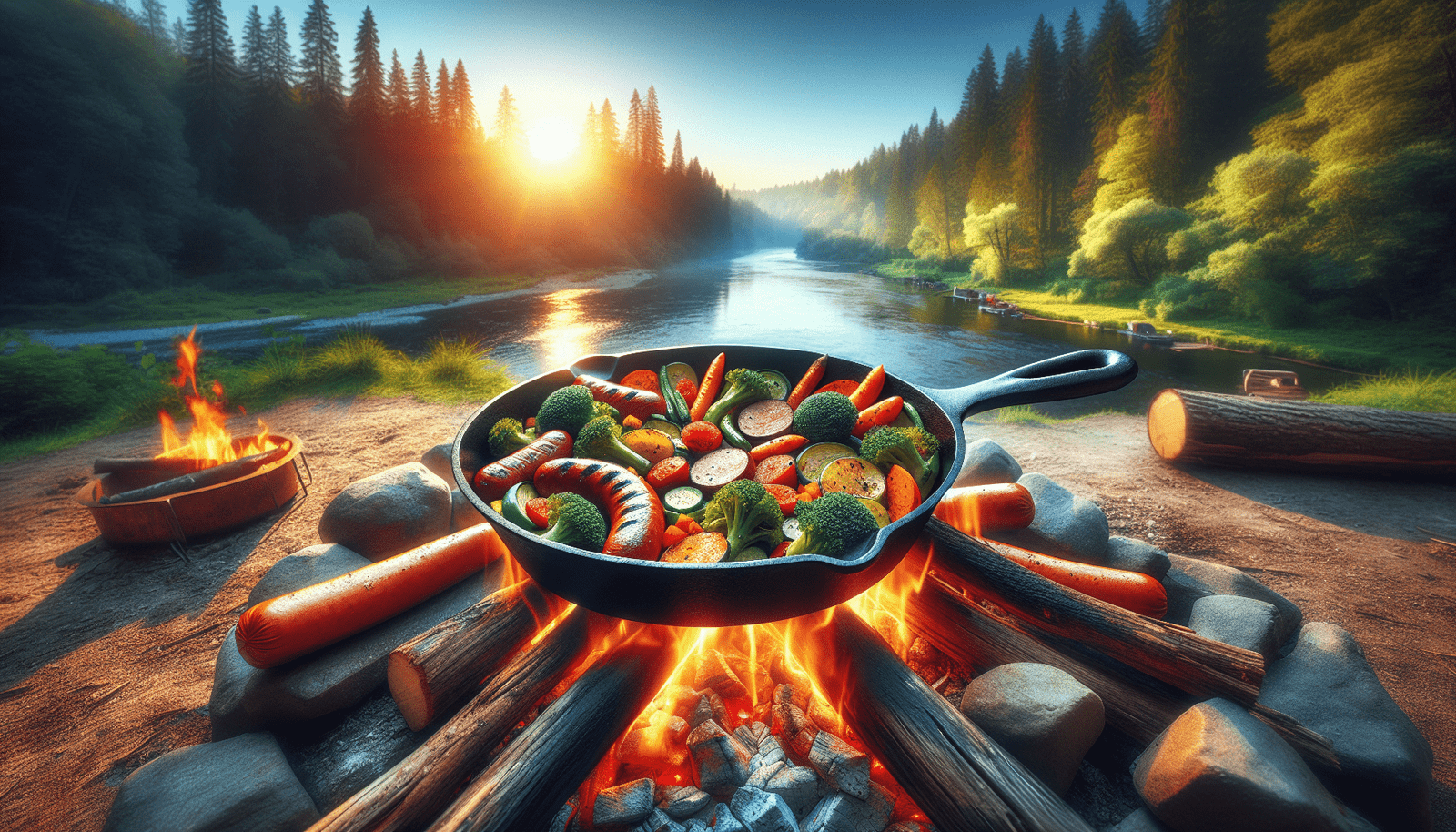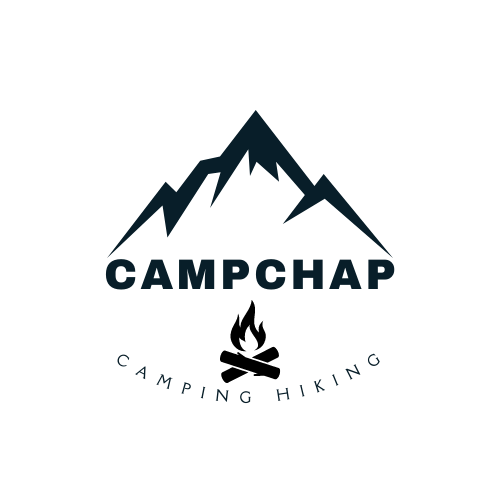When you’re out camping, the culinary possibilities are more exciting than you might think. “What Do People Cook With When Camping?” takes you on a delightful journey through the array of tools and gadgets that make outdoor cooking both practical and fun. Whether you’re a fan of the classic portable stove, a grill enthusiast, or someone who loves the simplicity of cooking over an open fire, you’ll discover plenty of tips and tricks to make your next camping meal a memorable one. This article is your go-to guide for transforming basic ingredients into delicious camping cuisine, ensuring that your outdoor adventures are as tasty as they are adventurous. Have you ever wondered what people cook with when camping? Whether you’re an experienced outdoor enthusiast or new to the camping scene, it’s always exciting to think about the different ways you can prepare food in the wild. In this article, we’ll dive into the diverse world of campfire cooking, exploring a variety of cooking methods, equipment, and recipes that will enhance your outdoor culinary experiences. By the end, you’ll have a comprehensive understanding of what people cook with when camping and some tips and tricks to make your meals memorable in the great outdoors.
Traditional Campfire Cooking
Open Flame
Cooking over an open flame is perhaps the most iconic image conjured when thinking about camping. The primal connection of fire to food preparation has a timeless appeal. All you need is some wood, a lighter, and a bit of patience.
Pros:
- Brings a smoky flavor to food.
- Provides warmth and light.
Cons:
- Requires constant attention.
- Can be difficult to control the temperature.
Grate Cooking
Using a metal grate over your campfire allows for more controlled cooking, similar to using a grill at home. The grate can be used to prepare various foods from meats to vegetables, adding convenience to the open flame method.
Grate Cooking Tips:
- Ensure the grate is stable.
- Use a grill brush to clean it before and after cooking.
- Be mindful of flare-ups by adjusting your fire.
Cooking on Coals
For a more hands-on approach, try cooking directly on the coals. This technique works well for foods that require high, even heat, like potatoes wrapped in foil or flatbreads.
Steps for Cooking on Coals:
- Allow the fire to burn down to hot coals.
- Place food wrapped in foil or directly on the coals.
- Turn food occasionally for even cooking.
- Use protective gloves to handle hot food.
Portable Camp Stoves
Propane Stoves
Propane stoves are extremely popular among campers because they provide a controllable and consistent heat source. They’re easy to set up and quickly cook a wide variety of foods.
Features:
- Adjustable heat control.
- Lightweight and portable.
- Reliable in all weather conditions.
Cons:
- Requires propane tanks.
- Less of an outdoor cooking experience than open fire.
Liquid Fuel Stoves
Liquid fuel stoves, often referred to as white gas stoves, use gasoline or specialized camping fuel. These stoves are great for long-distance hikes or international camping trips where refill options might be limited.
Pros:
- High heat output.
- Performs well in cold weather.
Cons:
- Requires priming.
- Can be more complex to operate.
Alcohol Stoves
Alcohol stoves run on denatured alcohol, which is widely available and portable. They are lightweight and favored by backpackers.
Pros:
- Lightweight and compact.
- Simple operation and maintenance.
Cons:
- Limited heat control.
- Slower cooking times.
Wood-Burning Stoves
Wood-burning stoves are a fantastic middle ground between an open flame and a portable stove. These stoves burn small sticks and twigs, making them eco-friendly and sustainable.
Pros:
- No need to carry fuel.
- Provides a campfire-like experience.
Cons:
- Requires foraging for wood.
- Can be less reliable in wet conditions.

Dutch Ovens and Cast Iron Cookware
Dutch Ovens
Dutch ovens are versatile and can be used for baking, roasting, and even frying. They’re perfect for preparing hearty stews, cobblers, and bread.
Pros:
- Durable and retains heat well.
- Can handle a variety of cooking methods.
Cons:
- Heavy and bulky to transport.
- Requires seasoning to maintain.
Skillets and Pans
cast iron skillets and pans are excellent for frying and sautéing. They can be placed directly on the fire or on a grate.
Tips for Using Cast Iron Cookware:
- Pre-season your cast iron before using.
- Use cooking oil to prevent sticking.
- Clean with hot water and a brush—avoid soap.
Table: Cast Iron Cookware Essentials
| Cookware | Ideal Use | Transport Tips |
|---|---|---|
| Dutch Oven | Baking, roasting | Use a carrying case |
| Skillet | Frying, sautéing | Pack with a cushion |
| Griddle | Pancakes, burgers | Keep dry to prevent rust |
Cooking with Foil
Foil Packets
Foil packets, also known as hobo packs, are a convenient and mess-free way to cook a meal over a fire. You can prepare individual servings, making them customizable and easy to handle.
How to Prepare Foil Packets:
- Lay out a large sheet of heavy-duty foil.
- Place protein (chicken, fish, etc.) and vegetables in the center.
- Season with spices, salt, and pepper.
- Fold into a packet, sealing edges tightly.
- Place on hot coals or a grate, cooking for 15-30 minutes, depending on ingredients.
Foil-Wrapped Vegetables
Vegetables cook well in foil, maintaining their moisture and flavor. Wrap them individually or in groups with seasoning and a bit of oil.
Popular Foil-Wrapped Vegetables:
- Corn: Wrap whole with butter and parsley.
- Peppers: Slice and season with olive oil and garlic.
- Potatoes: Slice thinly and layer with onions and cheese.

Specialty Camp Cooking Equipment
Portable Solar Ovens
A solar oven is a great eco-friendly option if you’re camping in a sunny location. These ovens use the sun’s rays to cook food slowly and evenly.
Benefits:
- Eco-friendly and free to operate.
- Useful for slow-cooked dishes and baking.
Drawbacks:
- Dependent on sunlight.
- Takes longer to cook compared to other methods.
Camping Grills
Portable grills are a step up from grates and provide a more home-like cooking experience. They come in charcoal or propane varieties and are perfect for larger groups.
Features:
- Allows for direct grilling and cooking.
- Can also serve as a fire pit with some models.
- Adjustable heat levels.
Camp Toasters
Specially designed camp toasters can be placed over a fire or stove, allowing you to make toast and other similar items easily.
Tips for Using Camp Toasters:
- Preheat toaster over the fire.
- Place bread or items in the slots.
- Monitor closely to avoid burning.
Cold-Storage and Meal Prep
Coolers
Keeping your food fresh while camping is crucial. A high-quality cooler can keep food cold for days, ensuring your perishable items remain safe to eat.
Features to Look For:
- Insulation quality: Ensures longer ice retention.
- Size: Matches the length of your trip.
- Durability: Sturdy enough to withstand outdoor conditions.
Cooler Packing Tips:
- Pre-chill your cooler with ice packs.
- Store foods in airtight containers.
- Keep the cooler shaded.
Portable Fridges
For longer trips or large groups, a portable fridge might be worth the investment. These run on battery or can be connected to a car’s power outlet.
Pros:
- Consistent cooling temperature.
- Reduces the need for ice.
Cons:
- Requires power source.
- More expensive than a traditional cooler.
Safety Tips for Cooking While Camping
Food Safety
Maintaining proper food safety practices is critical while camping to prevent foodborne illnesses.
Basic Guidelines:
- Keep raw and cooked foods separate.
- Cook foods to the right internal temperature.
- Wash hands and cooking surfaces frequently.
Table: Safe Cooking Temperatures
| Food Item | Safe Internal Temperature |
|---|---|
| Poultry | 165°F (74°C) |
| Ground Meat | 160°F (71°C) |
| Steaks, chops | 145°F (63°C) |
| Fish | 145°F (63°C) |
Fire Safety
Cooking over an open flame or with portable stoves requires adhering to fire safety guidelines to prevent accidents and protect your environment.
Precautions:
- Clear area around the fire or stove from flammable material.
- Never leave fires unattended.
- Keep a bucket of water or fire extinguisher nearby.
Camp Cooking Recipes
One-Pot Meals
One-pot meals minimize cleanup and are perfect for camp cooking. Below are some simple yet delicious recipes to try.
Campfire Chili:
- Brown ground beef in a Dutch oven.
- Add onions, bell peppers, garlic, and cook until soft.
- Stir in beans, tomatoes, and chili seasoning.
- Simmer for 30 minutes, stirring occasionally.
Camp Curry:
- Cook diced chicken in a pot with oil until browned.
- Add onions, garlic, and ginger; sauté until fragrant.
- Stir in curry paste, coconut milk, and vegetables.
- Simmer until vegetables are tender, about 20 minutes.
Foil Packet Recipes
Foil packets are a fun and efficient way to cook complete meals. Here’s a couple of favorites:
Lemon Herb Salmon:
- Place salmon fillets on foil with lemon slices, dill, and butter.
- Season with salt and pepper.
- Fold foil into a packet and cook on coals for 15-20 minutes.
Cheesy Potato & Sausage:
- Layer sliced potatoes, sausage, and onions on foil.
- Top with shredded cheese and your favorite seasoning.
- Seal packet and cook on coals for 25-30 minutes.
Conclusion
So, what do people cook with when camping? The options are as diverse as the great outdoors itself. From traditional campfire methods to modern portable stoves, cast iron cookware, and even solar ovens, there’s a method to suit every camper’s style and preference. By exploring these different techniques and tools, you can make your camping meals as enjoyable and memorable as the adventure itself. Whether you’re roasting marshmallows over an open flame or whipping up a gourmet dish on a propane stove, the experience of cooking in nature adds a unique flavor to your food and your memories. Happy camping and happy cooking!
